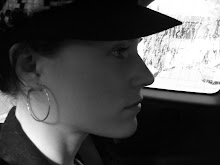It is no where near as hard as i thought it would be!
Thanks to Blogger, the process of creating a blog and setting up a Google Reader account was so very simple. To be honest I thought it was going to be a long, confusing and frustrating task, but to my surprise it was pretty much a 3 step process. I would not hesitate getting the children in my class to use Blogger to set up blogs. It took no longer than 2 minutes to set up an account with blogger and a Blog. It prompts you then to create a Google account.
The best part about Blogger is the Dashboard. It has a simple news feed next to the blogs I'm following (which can be 'followed' by simply clcking 'add' and typing in the URL), and it also has the option to view the news feed in Google Reader - which automatically has in it all the blogs I added to my dashboard. I still cannot believe how simple and easy to use it is - even for me!!
Not only will a 'Teacher' blog be usefull in keeping both parents and students up-to-date (how many of the notes handed out in schools are 'found' in the bottom of the school bag at the end of term?), but they could be usefull in providing reminders, posting the homework (I doubt the dog will eat a computer...), giving opptional extra questions or research tasks, publishing public encouragement for students who do something exceptional during the week etc. The list could go on!
Blogger makes it so simple that not only will Teachers have a blog, but students will be able to have their own blogs too. Blogs are a great tool to help provide an engaged ICT learning environment as per Kearsley & Shneideman's Engagement Theory (1999). The Relate-Create-Donate process provides a framework for implementation of blogs in the classroom. For example, in a year 4 class there may be a unit on Culture. The culminating task for this unit may be a Cultural festival. In order for the class to organise the festival, they need to find out a number of specified aspects of given cultures and then think of a way each aspect may (or may not) be represented in the festival. This is where 'Relate' comes in to play. Students are organised into groups and each group given a culture. The focus of this principle is collaboration, communication and social skills.
Every group creates a blog, then adds all the other groups URLs into their news feeds. Each week, students research a given aspect of their focus culture (e.g. clothing) and as a group post to their blog an overview/description/pictures of the research. They then need to decide how this could be represented and post their ideas on this. Groups read and commont on each others posts and ideas.
This is both the 'Create' and 'Donate' principles - they get to 'define the nature of the project' even with a given topic, and they 'donate' their ideas back into the 'world'.
Just a rough and quick idea I came up with - but reading back it doesn't sound too bad!
Do not be afraid of Blogs.... they aren't so scary after all :)
Keirsley, G. & Shneiderman, B (1999) Engagment Theory: A framework for technology-based teaching and learning. Available from http://home.sprynet.com/~gkearsley/engage.htm
Subscribe to:
Post Comments (Atom)

Hi Bethanie, great blog, really informative. I had not thought about the assessment and feedback possibilities of the blog and RSS feeds. Your culture activity sounds very practical and appropriate for yr 4's.
ReplyDeleteNice work, stuart